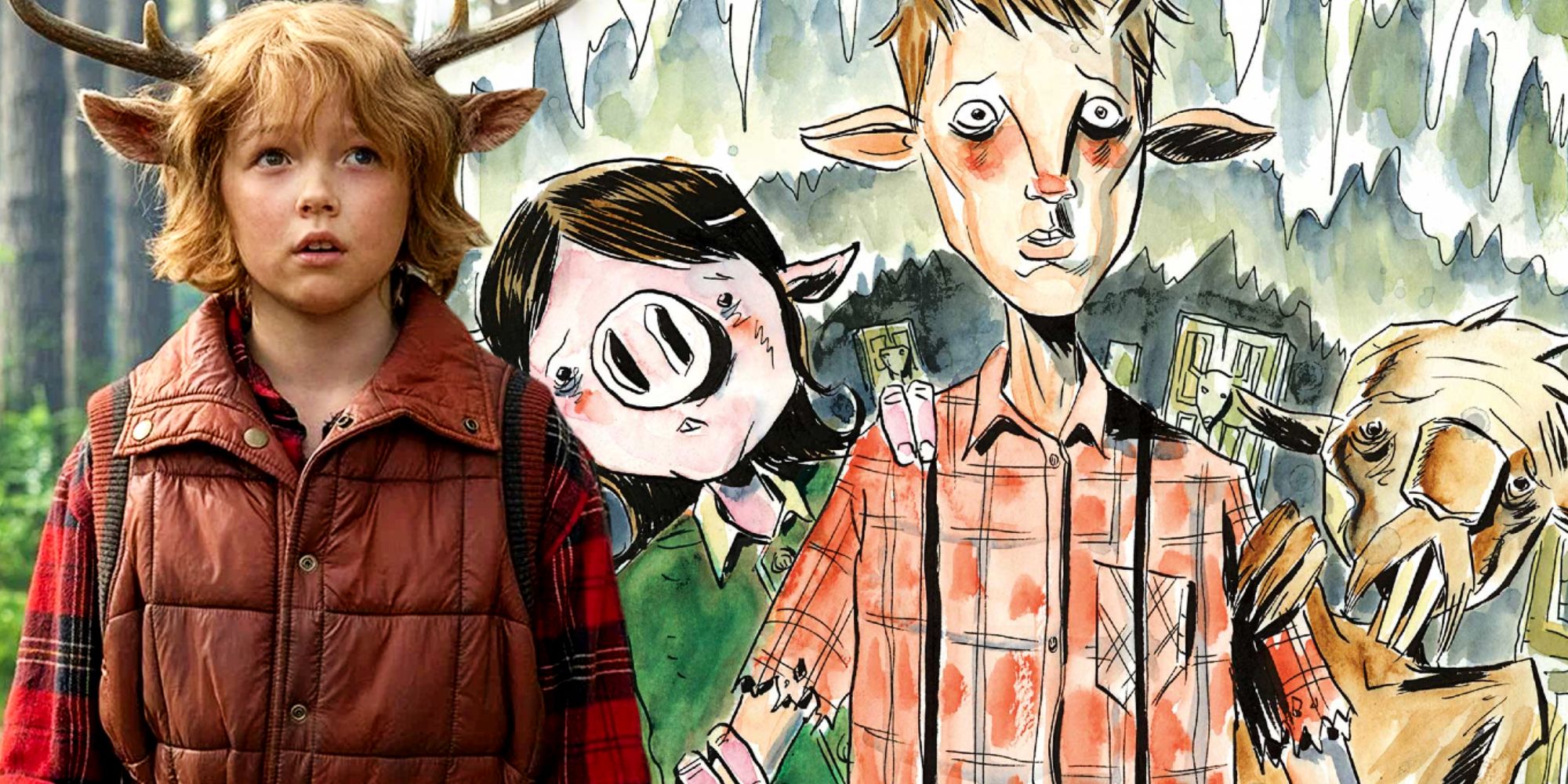The latest season of Netflix’s Sweet Tooth emerges as significantly different in tone and treatment from its comic source material. Based on the eponymous comic book by Jeff Lemire, Sweet Tooth explores three narrative strands that unfold in a concurrent manner, whilst delving into the repercussions of an apocalyptic event that changes the world as we know it. Part sci-fi, part fantasy, with a smattering of action-adventure, Sweet Tooth introduces entirely new characters to the dystopian parable in order to heighten its fairytale appeal.
The Netflix show touches upon the pathos inherent within a post-apocalyptic world, such as the dark narrative strain of hybrid children being a key ingredient in the manufacture of a cure. However, Sweet Tooth is nowhere near as grim as the comic, as it deftly avoids translating the lurid details of violence onscreen. This also has to do with the series’ 12 rating, which essentially warrants Netflix to tweak the source material in order to suit a much younger audience. On the other hand, Lemire’s work paints an especially violent picture, one that is drenched in blood, a prime example being when the primary protagonist, Gus, is forced to beat a fellow hybrid’s brains in with a brick, which is a terrifying scene to absorb or process.
While the bond between some characters, such as Gus and Jeppard, emerge as endearing in the show, the comics assume a more misanthropic stance, as most of the characters are driven by self-preservation as opposed to tenderness for another. Instances of sexual violence amid a post-apocalyptic setting are also absent from the show, as the showrunners chose to shift their focus on adding hints of sophistication to the existing characters. This is, of course, most evident in the central figure of Gus, who is akin to a self-assured Spielbergian hero as opposed to Gus in the comics, who is slightly rougher around the edges. Moreover, the numerous scenes at Aimee’s Preserve and at Dr. Singh’s Stepford-ian community have been created solely for the show, as it imbues the narrative with tangible urgency and helps bring divergent story threads together for maximum impact.
Perhaps the primary reason why the show diverges heavily from the overall tone of the comics is that the original source material mirrors the horrors of our immediate reality a little too close for comfort. On the one hand, the show does not shy away from embracing conversations about masks, social distancing, and the intrinsic change in human motivations when faced with the possibility of losing everything they stand for. However, it does not assume the overtly nihilistic tone of the comics either, which is established via a tender layer of humanity – a kind of gentleness that reaffirms one’s faith in the human race as a whole. This is also reflected in the way in which Season 1 of Sweet Tooth ends, as despite a string of startling revelations, the show ends on a note of hopeful melancholy as opposed to utter and complete despair.
As Lemire’s Sweet Tooth is highly stylized, verging on the realm of hyper surrealism, the show understandably makes a point to alter key characters both in terms of motivations and appearance. For instance, Dr. Singh’s arc is considerably more sympathetic in the show, as he is etched as a man who chooses love over morality, broken by circumstances as opposed to being inherently cruel and morally gray. Apart from this, the show chooses are more lush and vibrant color palette, whilst limiting its voyage between Wyoming and Colorado. This marked difference is bound to emerge as striking for comic readers, as Lemire’s haunting art style is a stark contrast to the welcoming aura of the Netflix show.


